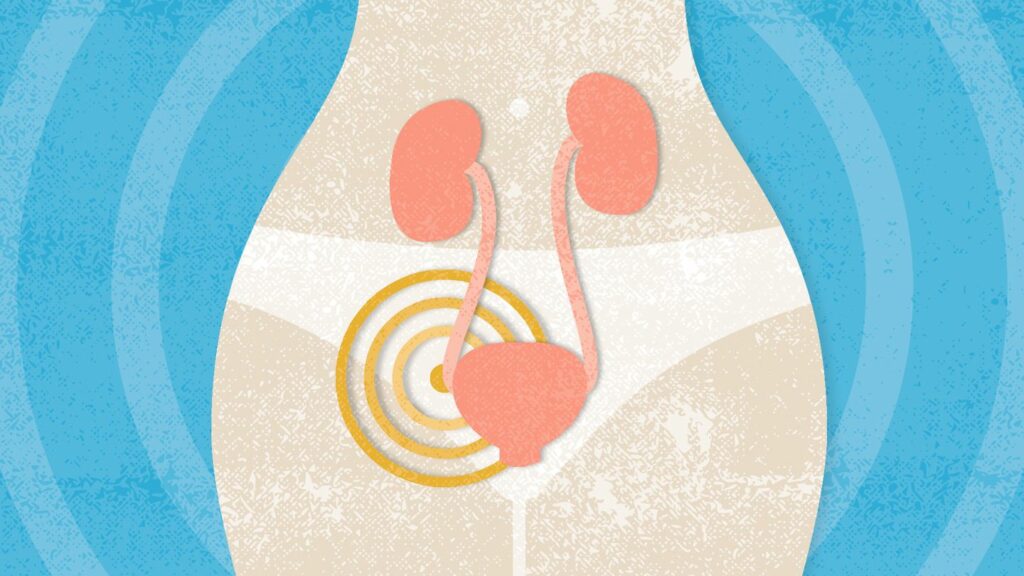As women transition through menopause, they often face various health challenges, including an increased susceptibility to urinary tract infections (UTIs). Postmenopausal UTIs can be particularly troublesome due to hormonal changes that affect the urinary and genital tissues. In this blog post, we will delve into the causes, symptoms, and, most importantly, the treatment options available for postmenopausal UTIs.
Contents
How Are UTIs Connected To the Postmenopausal Period?

The connection between urinary tract infections (UTIs) and the postmenopausal period is primarily associated with hormonal changes that occur during menopause. Menopause is a natural biological process marking the end of a woman’s reproductive years, typically occurring around the age of 50. During this phase, the body undergoes significant hormonal fluctuations, particularly a decline in estrogen levels. This hormonal shift can influence various tissues and structures in the urogenital tract, contributing to an increased susceptibility to UTIs in postmenopausal women. Here’s how UTIs are connected to the postmenopausal period:
Thinning of Urogenital Tissues:
- Estrogen plays a crucial role in maintaining the health and integrity of the urogenital tissues, including the lining of the urethra, bladder, and vagina. As estrogen levels decline during menopause, these tissues may undergo thinning and atrophy, making them more vulnerable to infection.
- Thinning of the vaginal walls, in particular, can reduce the protective barrier against bacteria, allowing pathogens to more easily reach the urinary tract.
Changes in Urethral Function:
- Estrogen helps maintain the tone and elasticity of the muscles in the urethra. As estrogen levels decrease, the urethral tissues may become less robust, potentially leading to issues such as urinary incontinence and difficulty fully emptying the bladder.
- Incomplete bladder emptying can create a conducive environment for bacterial growth, increasing the risk of UTIs.
Altered Vaginal Microbiota:
- Estrogen influences the composition of the vaginal microbiota, helping to maintain a balance of beneficial bacteria. When estrogen levels decline, the vaginal microbiota may change, potentially allowing harmful bacteria to proliferate.
- An imbalance in the vaginal microbiota can contribute to the ascent of bacteria into the urethra and bladder, leading to UTIs.
Reduced Immune Response:
- Estrogen is known to modulate the immune response in the urogenital tract. A decrease in estrogen levels can result in a weakened immune response, making the body less effective at combating bacterial infections.
- A compromised immune system increases the likelihood of bacterial colonization and infection in the urinary tract.
Urinary Tract Changes:
- Aging and hormonal changes can affect the structure and function of the urinary tract, including the ureters, bladder, and urethra. These changes may contribute to alterations in urinary flow and retention, further increasing the risk of UTIs.
Recognizing the connection between postmenopausal hormonal changes and UTIs is crucial for understanding and addressing the increased susceptibility to these infections in this population. Healthcare providers often consider hormone replacement therapy (HRT) and other interventions to manage the urogenital effects of menopause and reduce the risk of UTIs in postmenopausal women. Regular check-ups, preventive measures, and prompt treatment are essential for maintaining urogenital health during the postmenopausal period.
Different Postmenopausal UTI Treatment Options

Postmenopausal UTI treatment involves a multi-faceted approach that may include medical interventions, lifestyle modifications, and hormonal therapy. Here are different treatment options for postmenopausal UTIs:
Antibiotics:
- Antibiotics are the primary treatment for UTIs, and the choice of antibiotic depends on the specific bacteria causing the infection. Commonly prescribed antibiotics include trimethoprim-sulfamethoxazole, nitrofurantoin, and fluoroquinolones such as ciprofloxacin.
- It’s essential to complete the full course of antibiotics as prescribed by the healthcare provider to ensure complete eradication of the infection.
Hormone Replacement Therapy (HRT):
- Estrogen plays a key role in maintaining the health of urogenital tissues. In postmenopausal women, reduced estrogen levels can lead to thinning of the vaginal walls and increased susceptibility to UTIs. Localized estrogen therapy, such as vaginal creams, tablets, or rings, can help restore estrogen levels in the urogenital tissues.
- Estrogen therapy helps in improving the integrity of the urethra and bladder lining, reducing the risk of recurrent UTIs.
Probiotics:
- Probiotics are beneficial bacteria that can help maintain a healthy balance in the urinary tract. They may inhibit the growth of harmful bacteria and support the body’s natural defenses.
- You can take probiotics as supplements or consume it through fermented foods like yogurt, kefir, and sauerkraut.
Lifestyle Modifications:
- Adequate Hydration: Drinking plenty of water helps flush out bacteria from the urinary tract.
- Personal Hygiene: Proper hygiene practices, including wiping from front to back after using the toilet, can prevent the introduction of bacteria into the urethra.
- Urination Habits: Emptying the bladder before and after sexual activity can help eliminate bacteria that may have entered the urethra during intercourse.
- Loose, Breathable Clothing: Wearing cotton underwear and avoiding tight-fitting pants can reduce moisture and promote a healthier urogenital environment.
Cranberry Products:
- While evidence is not conclusive, some studies suggest that cranberry products may help prevent UTIs by interfering with the adhesion of bacteria to the urinary tract walls. This is due to the presence of compounds called proanthocyanidins.
- Cranberry supplements or unsweetened cranberry juice may be recommended, but it’s essential to consult with a healthcare provider before incorporating them into the routine, especially for individuals with certain health conditions or taking specific medications.
- Regular Follow-up and Monitoring:
- Postmenopausal women with a history of UTIs may benefit from regular follow-up appointments with their healthcare provider. This allows for monitoring of symptoms, assessment of treatment effectiveness, and adjustments to the treatment plan if necessary.
It’s crucial for individuals experiencing symptoms of a UTI to consult a healthcare professional for proper diagnosis and treatment. Self-treatment or neglecting symptoms can lead to complications and recurrent infections. Healthcare providers can tailor the treatment plan based on the individual’s medical history, severity of symptoms, and specific circumstances.
How To Get Postmenopausal UTI Treatment?

If you suspect you have a postmenopausal urinary tract infection (UTI), it’s important to seek prompt medical attention. Here’s a step-by-step guide on how to get postmenopausal UTI treatment:
Recognize Symptoms:
- Be aware of the common symptoms of UTIs, such as frequent urination, urgency, burning sensation during urination, cloudy or strong-smelling urine, pelvic discomfort, and lower abdominal pain.
Consult a Healthcare Professional:
- Schedule an appointment with a healthcare provider, such as a primary care physician, gynecologist, or urologist. If possible, provide information about your medical history, including any history of UTIs or relevant postmenopausal symptoms.
Medical Evaluation:
- During the appointment, the healthcare provider will perform a medical evaluation. This may involve a physical examination, discussion of symptoms, and possibly a urine sample for analysis.
- In some cases, additional tests such as a urine culture may be ordered to identify the specific bacteria causing the infection and determine the most appropriate antibiotic for treatment.
Prescription of Antibiotics:
- If a UTI is confirmed, the healthcare provider will prescribe a course of antibiotics. It’s crucial to take the prescribed antibiotics exactly as directed and to complete the full course, even if symptoms improve before the medication is finished.
Consideration of Hormone Replacement Therapy (HRT):
- Depending on the specific circumstances, especially if there are signs of urogenital atrophy contributing to recurrent UTIs, the healthcare provider may discuss the option of hormone replacement therapy (HRT). This could involve localized estrogen treatments, such as vaginal creams, tablets, or rings.
Follow-up Appointments:
- Attend any scheduled follow-up appointments as recommended by the healthcare provider. Follow-up visits allow for the monitoring of symptoms, assessment of treatment effectiveness, and potential adjustments to the treatment plan.
Conclusion
Postmenopausal UTIs can be challenging, but with proper understanding and timely intervention, women can effectively manage and prevent these infections. Seeking guidance from healthcare professionals, adopting a holistic approach to treatment, and incorporating lifestyle modifications can significantly improve the quality of life for postmenopausal women dealing with UTIs. Women must prioritize their urogenital health and address any concerns promptly to maintain overall well-being during the postmenopausal stage.
If you are facing menopause-related issues, menopause treatment at HerMantra can help. Book your free trial online menopause treatment session now.


